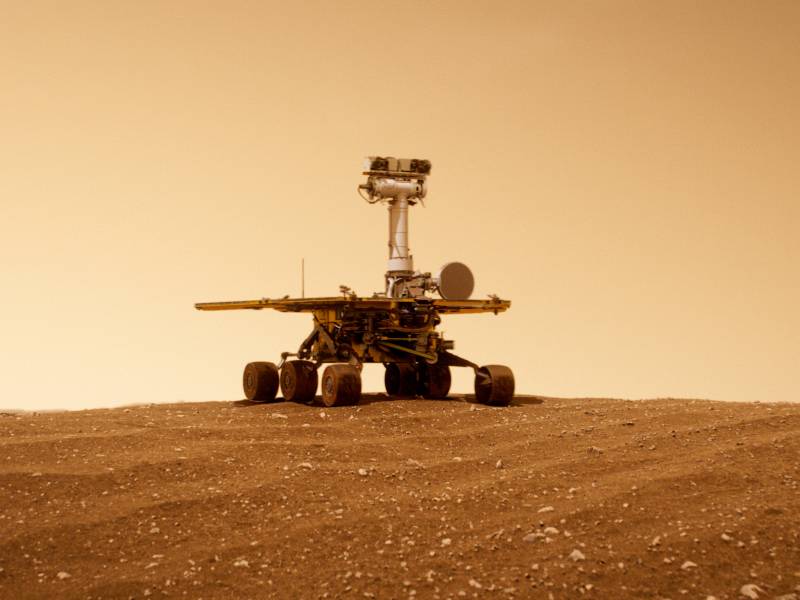The story of how they were conceived, designed, tested, and sent to Mars fills the first half of Good Night Oppy, and it’s a suspense-filled ride, crammed with brainstorming, trouble-shooting, deadline-pushing, and frequent nail-biting. Tight scheduling meant engineers needed to invent solutions on the fly when, say, balloons meant to cushion the rovers’ landing burst on impact during tests. And even after launch, there were problems to be overcome. Solar flares corrupted the rovers’ software as they rocketed toward Mars, requiring an unexpected reboot in mid-flight.
Still, seven months and 300 million miles later, they get to the Red Planet and the real fun begins. The filmmakers have plenty of footage of NASA folks cheering, fretting, and most of all, explaining. The director also employed the digital wizards from Industrial Light & Magic to conjure the scenes on Mars that his crew can’t shoot: the rovers, for the first 90 days racing against time as the scientists assume their solar panels will get so dusty they’ll no longer provide power.
Then came what appeared a mission-killer of a problem: Whirling mile-high tornados of dust. But to the astonishment of the scientists, when the dust cleared, the solar panels had been scrubbed clean and were as spotless as the day they’d landed.

9(MDAxOTAwOTE4MDEyMTkxMDAzNjczZDljZA004))

